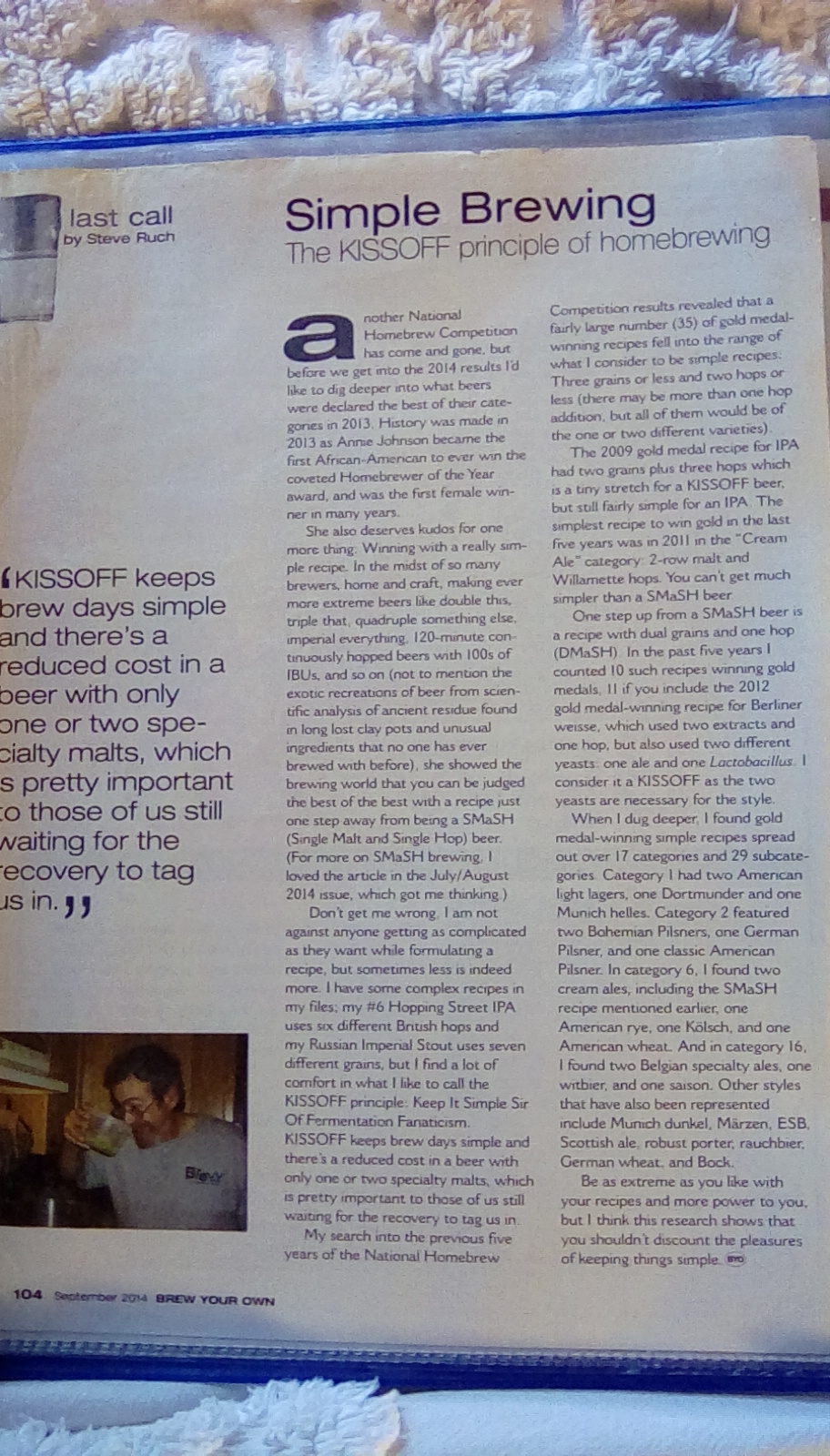Good article Steve.
Rarely do recipes I brew have more than three grains (most have two). Likewise, few have more than three hop varieties and I often limit to one or two.
Palmer’s basic recipe formula in How to Brew follows a similar line of minimalist thinking though does get a bit more involved as the beers get darker. He describes these as crude a jumping off point but surprisingly many recipes fall into this framework rather nicely:
* Pale: base malt (many use a base malt blend) plus a half-pound of caramel malt
* Amber: pale plus a half-pound of dark caramel malt
* Brown: pale plus a half-pound of chocolate malt
* Porter: amber plus a half-pound of chocolate malt
* Stout: porter plus a half-pound of roasted barley
Drew Beechum’s talk at The AHA conf a few years back discussed a similar streamline he dubbed ‘On the Ones’:




